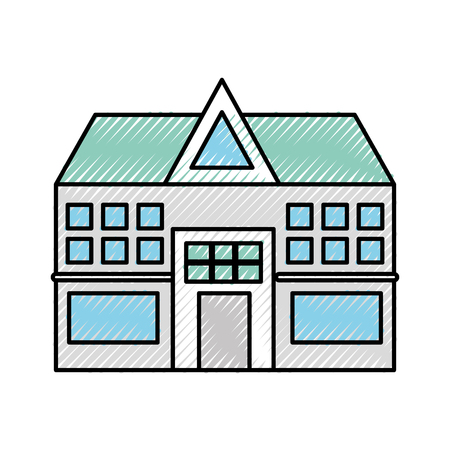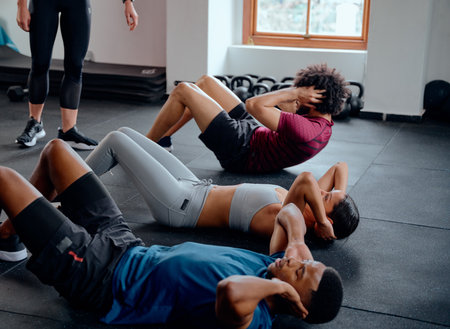Understanding Your Injury and Recovery Goals
If you’re bouncing back from a sports injury, the first step is knowing exactly what you’re dealing with. Top US physical therapists always start by helping athletes and active folks understand their specific injury. Whether it’s a sprained ankle from basketball or a pulled hamstring from running, each injury needs its own approach.
How Physical Therapists Assess Sports Injuries
In the United States, expert physical therapists use a mix of hands-on exams, movement tests, and sometimes even video analysis to figure out what’s wrong. They look at:
- Pain level – How much does it hurt, and where?
- Range of motion – Can you move like you used to?
- Strength testing – Are any muscles weaker than before?
- Swelling or bruising – Is there visible damage?
This thorough assessment helps PTs create a home exercise program that truly fits your needs.
Setting Realistic Recovery Goals
No two recoveries are the same. That’s why American PTs work with you to set goals that make sense for your body and your sport. These goals are personalized, realistic, and designed to keep you motivated for the long haul.
Typical Recovery Goal Examples
| Type of Injury | Short-Term Goal | Long-Term Goal |
|---|---|---|
| Ankle Sprain | Walk pain-free at home | Return to running and sports drills |
| Knee Ligament Strain | Bend knee fully without pain | Play full-court basketball again |
| Shoulder Overuse Injury | Lifting arm overhead easily | Pitch or serve at full speed |
Your Recovery Plan Starts Here
The journey back from a sports injury starts with understanding both your body and your goals. With the right info in hand—and support from top US physical therapists—you’ll be ready to build a home exercise program that gets you moving safely and confidently again.
2. Essential Components of a Home Exercise Program
When recovering from a sports injury, building an effective home exercise program is crucial for a safe and speedy recovery. Top physical therapists in the US emphasize three main types of exercises: mobility, strengthening, and flexibility. Here’s how these core components work together to help you get back on track.
Mobility Exercises
Mobility exercises help restore your joint movement after an injury. These are gentle activities designed to reduce stiffness and improve range of motion without causing pain. For example, simple ankle circles or shoulder rolls can be excellent starting points. Physical therapists often recommend doing these exercises daily, especially during the early stages of recovery.
Sample Mobility Exercises Table
| Exercise | Body Part | How Often |
|---|---|---|
| Ankle Circles | Ankle | 2 sets of 10 reps, twice daily |
| Knee Slides | Knee | 2 sets of 10 reps, once daily |
| Shoulder Rolls | Shoulder | 3 sets of 10 reps, daily |
Strengthening Exercises
Strengthening is key to rebuilding muscle support around the injured area. US physical therapists recommend starting with low-resistance activities that focus on proper technique. As you progress, you can gradually add resistance bands or light weights. For instance, if you’re recovering from a knee injury, straight leg raises or mini squats might be included in your plan.
Common Strengthening Exercises Table
| Exercise | Main Focus Area | Suggested Sets & Reps |
|---|---|---|
| Straight Leg Raises | Quadriceps (Thigh) | 2-3 sets of 10-15 reps |
| Banded Rows | Upper Back/Shoulder | 2 sets of 12 reps |
| Heel Raises | Calves/Ankle Stability | 3 sets of 10 reps |
Flexibility Exercises
Flexibility training helps prevent future injuries and eases muscle tightness that can develop during recovery. Gentle stretching is usually encouraged by therapists after warming up. Examples include hamstring stretches or calf stretches held for about 20-30 seconds each. Remember not to push into pain—ease into each stretch and hold comfortably.
Quick Tips for At-Home Success:
- Stick to your schedule: Consistency matters more than intensity.
- Pain is not gain: Stop any exercise that causes sharp or lasting pain.
- Add variety: Rotate through different exercises for balanced recovery.

3. Creating Your Daily Routine and Staying Motivated
Recovering from a sports injury takes time, patience, and consistency. Building a daily home exercise routine can help you regain strength and mobility while staying on track with your recovery goals. Here’s how top US physical therapists recommend structuring your plan, tracking your progress, and keeping yourself motivated using tools popular in the United States.
Structuring Your Exercise Plan
Start by talking with your physical therapist to get a list of recommended exercises tailored for your injury. Next, organize these into a schedule that fits your lifestyle. Most people find it helpful to break workouts into short sessions throughout the day instead of one long session. This makes the routine less overwhelming and easier to stick with.
| Day | Morning | Afternoon | Evening |
|---|---|---|---|
| Monday | Stretching | Strength exercises | Ice/Rest |
| Tuesday | Mobility drills | Balance work | Foam rolling |
| Wednesday | Stretching | Strength exercises | Meditation/Rest |
| Thursday | Mobility drills | Balance work | Ice/Rest |
| Friday | Stretching | Strength exercises | Foam rolling |
| Saturday | Light cardio (if cleared) | Core work | Meditation/Rest |
| Sunday | Rest or active recovery (walking, gentle yoga) | ||
Tracking Your Progress
Tracking helps you see improvement and keeps you motivated. In the US, many people use fitness trackers like Fitbit, Apple Watch, or Garmin to monitor activity levels and set reminders for exercise sessions. You can also keep a simple journal or use a spreadsheet to log your daily exercises, pain levels, and notes from each session.
| Date | Exercise Completed? | Pain Level (1-10) | Notes/Comments |
|---|---|---|---|
| 06/01/2024 | Yes | 4 | Knee felt tight after squats; ice helped. |
| 06/02/2024 | No (rest day) | – | Took a walk outside; no pain. |
| 06/03/2024 | Yes | 3 | Ankle mobility improving. |
Using Goal-Setting Apps and Reminders Popular in the US
A variety of free and paid apps can help you stay accountable:
- MyFitnessPal: Track workouts, nutrition, and progress photos.
- Trello: Create checklists for weekly rehab tasks.
- Apple Reminders/Google Keep: Set daily reminders for exercise times.
- Couch to 5K: Gradually return to running if cleared by your PT.
- Stryd or Strava: Log walking or running mileage once you’re ready for more activity.
- YouTube playlists: Save favorite at-home PT videos for easy access.
Tips to Stay Motivated Each Day:
- Create small, achievable goals—like completing every exercise three times a week.
- Celebrate small wins with non-food rewards (new workout gear, a movie night).
- If you miss a day, don’t stress—just get back on track tomorrow.
- If possible, ask a friend or family member to join you for accountability.
- Keeps things fresh by rotating exercises or trying new routines suggested by your PT.
Your Recovery Journey Is Personal—Stay Consistent!
The most important thing is to stay consistent with your program. Use the tools above to help structure your days and keep yourself motivated as you move forward in your recovery journey.
4. Tips for Proper Technique and Injury Prevention
Mastering Correct Form at Home
Keeping the right technique is key when recovering from a sports injury. Top US physical therapists stress that practicing good form helps you heal faster and prevents new injuries. Always start slow, follow your therapist’s instructions, and use a mirror or your phone to check your movements. If something hurts in a sharp or unusual way, stop right away and reach out to your healthcare provider.
Smart Use of Common Household Items
You don’t need fancy equipment to build strength at home. Everyday items found in most American homes can double as workout tools—just use them safely! Here’s a quick guide:
| Household Item | Exercise Example | Safety Tip |
|---|---|---|
| Canned Goods | Bicep curls, shoulder raises | Check cans are sealed & not slippery |
| Backpack (filled) | Weighted squats, lunges | Distribute weight evenly in bag |
| Chair (sturdy) | Step-ups, seated knee extensions | Use on flat surface, test stability first |
| Towel | Hamstring stretches, resistance pulls | Avoid wet towels to prevent slipping |
| Pillow | Ankle balance drills, knee squeezes | Select firm pillow for better support |
The Importance of Warm-Ups and Cool-Downs
A proper warm-up gets your blood flowing and preps your body for exercise. Spend 5-10 minutes doing light cardio like marching in place or gentle jumping jacks (if allowed). Follow this with dynamic stretches such as arm circles or leg swings. After finishing your exercises, cool down with static stretches—hold each stretch for 20-30 seconds—to help reduce soreness and improve flexibility.
Sample Warm-Up & Cool-Down Routine:
| Warm-Up (5-10 min) | Cool-Down (5 min) |
|---|---|
| Marching in place Arm circles Gentle side lunges Neck rolls |
Hamstring stretch Quad stretch Calf stretch Shoulder stretch Deep breathing exercises |
Listen to Your Body and Pace Yourself
If you feel tired or sore beyond what’s normal, take it easy. Recovery isn’t a race! Stay consistent but allow rest days so your body can heal and get stronger.
5. When to Seek Professional Guidance
Recovering from a sports injury at home can be empowering, but knowing when to ask for professional help is just as important. Top US physical therapists recommend keeping an eye out for certain warning signs and understanding how to connect with your healthcare team, including exploring telehealth options available throughout the United States.
Warning Signs: When to Pause and Reach Out
If you notice any of these symptoms during your home exercise program, its a good idea to check in with a physical therapist or healthcare provider:
| Warning Sign | What It Might Mean |
|---|---|
| Sharp or increasing pain | Your injury may be aggravated or not healing properly. |
| Swelling that won’t go down | Possible inflammation or re-injury. |
| Numbness or tingling | Nerve involvement could require medical attention. |
| Loss of movement or strength | You may need a change in your recovery plan. |
| Signs of infection (redness, warmth, fever) | This requires immediate medical care. |
How and When to Contact Your Physical Therapist or Healthcare Provider
You dont have to wait for a scheduled appointment if something feels wrong. Here are some tips:
- Email or Message Portals: Many US clinics use secure patient portals (like MyChart) so you can send questions or updates directly to your care team.
- Phone Call: If symptoms worsen suddenly, call your clinic’s office number—theres often a nurse line for quick advice.
- Emergency Situations: For severe symptoms such as loss of consciousness, intense chest pain, or inability to move a limb, call 911 or go to the nearest ER.
Telehealth: A Convenient Option Across the US
If you cant make it into the clinic or prefer remote support, telehealth is widely used across America. You can set up video visits with your physical therapist to review exercises, discuss concerns, and get personalized feedback without leaving home. Popular telehealth platforms include:
| Telehealth Platform | Main Features | Availability |
|---|---|---|
| Doxy.me | No app required; browser-based video calls; HIPAA compliant. | Nationwide (US) |
| Zocdoc Video Visits | Book appointments online; see multiple providers; insurance integration. | Most states (US) |
| MyoClinic Connect (Mayo Clinic) | Direct access to Mayo Clinic specialists; secure messaging and video. | Select regions (US) |
| Your Clinic’s Patient Portal (e.g., MyChart) | Integrated with your health records; messaging and virtual appointments. | Varies by provider location |
Your Recovery Team Is There for You
The most successful recoveries happen when you stay connected with your physical therapist and know when to ask for help. Don’t hesitate to reach out if you’re unsure about your progress or experience new symptoms—your healthcare team is ready to support you every step of the way.


